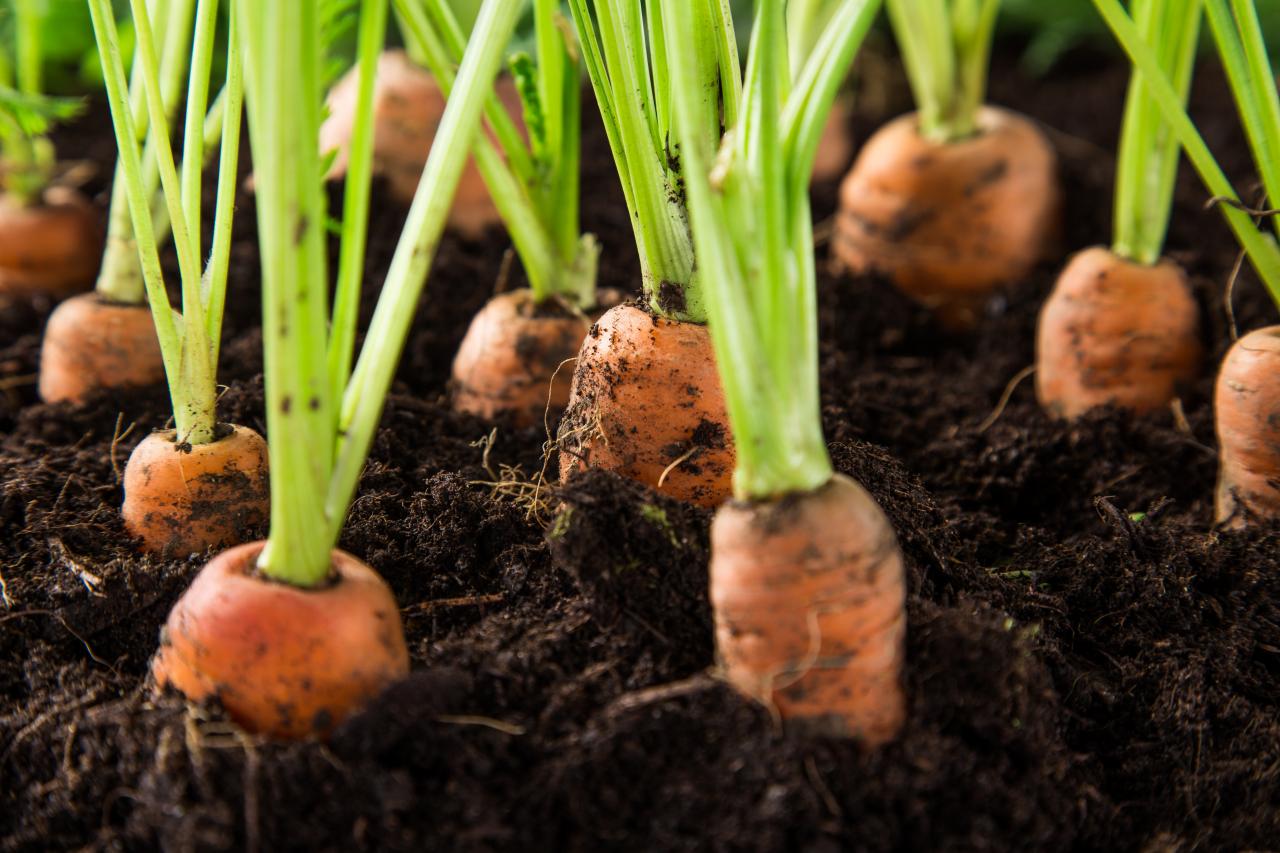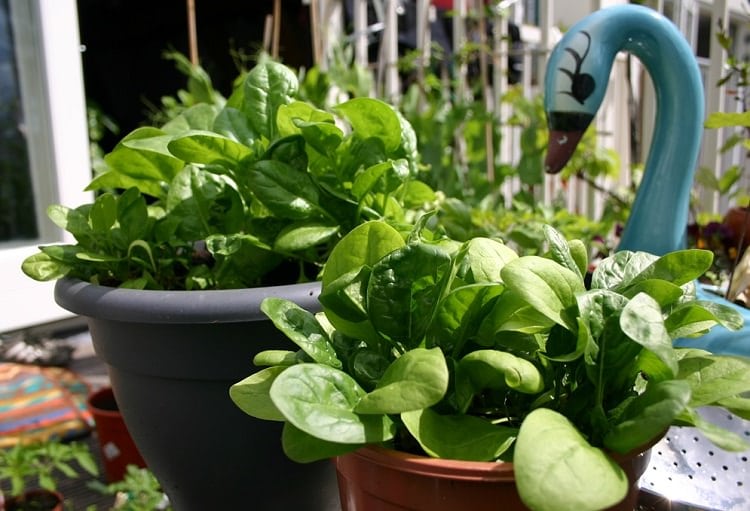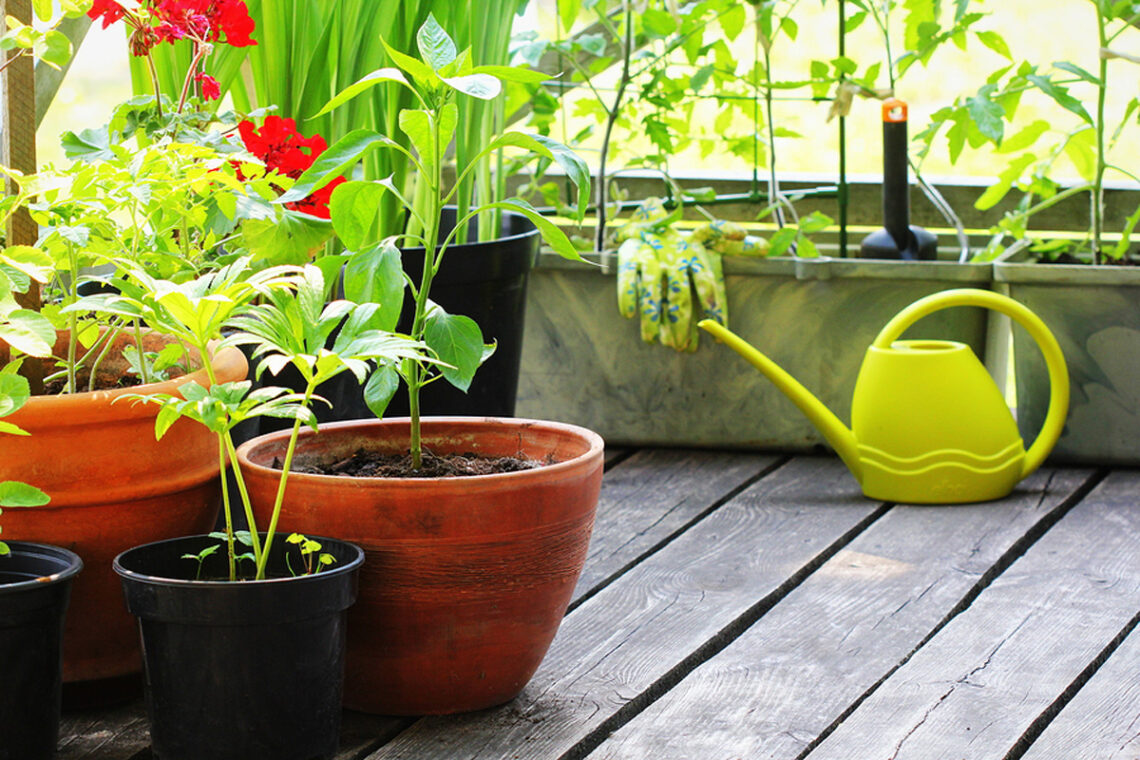Selecting the Perfect Small Vegetables for Your Container Garden
When choosing small vegetables to grow in pots, it is crucial to consider several factors to ensure a successful and rewarding gardening experience. First, evaluate your available space, both in terms of the number of pots you can accommodate and the overall square footage. This assessment will help you determine which vegetables are most suitable for your specific situation.
Next, analyze your local climate and growing season. Some small vegetables, like radishes and lettuce, thrive in cooler temperatures and shorter growing seasons, making them ideal for early spring and late fall planting in many regions. In contrast, cherry tomatoes and peppers require warmer temperatures and longer growing seasons, so they may be better suited for summer cultivation.
Furthermore, take into account the unique preferences of each vegetable regarding soil, sunlight, and water. For example, baby carrots and radishes require loose, well-draining soil to grow long and straight, while leafy greens like spinach and arugula benefit from slightly richer, moisture-retentive soil. Most small vegetables thrive in full sun, but some, like lettuce, can tolerate partial shade, especially in warmer climates.
Lastly, consider your personal preferences and dietary needs when selecting small vegetables to grow in pots. If you enjoy spicy flavors, radishes and arugula might be your top choices. Alternatively, if you’re seeking nutrient-dense options, leafy greens like spinach and kale are excellent choices. By carefully considering these factors, you can create a thriving container garden filled with delicious and healthy small vegetables tailored to your unique situation.
How to Grow Radishes in Pots: A Step-by-Step Guide
Radishes are an excellent choice for growing in pots due to their rapid growth, small size, and minimal maintenance requirements. To get started, select a container with drainage holes and a depth of at least 6 inches. Fill the pot with a high-quality potting mix, leaving about an inch of space at the top.
Next, sow radish seeds directly into the soil, planting them about 1 inch apart and 1/2 inch deep. Gently cover the seeds with soil and water thoroughly. Radishes prefer full sun but can tolerate partial shade, especially in warmer climates. Maintain consistent moisture, ensuring the soil remains damp but not waterlogged.
To encourage rapid growth, keep the soil temperature between 50 and 70°F (10-21°C). Radishes typically mature in 3-6 weeks, depending on the variety. To determine if your radishes are ready to harvest, gently scratch the soil around the base of the plant. If the radish is visible and approximately 1 inch in diameter, it’s time to harvest.
To avoid common issues like bolting and pest infestations, consider the following tips:
- Bolting: Bolting occurs when radishes send up a flower stalk prematurely due to stress, such as extreme temperatures or inconsistent watering. To prevent bolting, maintain consistent moisture, avoid over-fertilizing, and choose bolt-resistant radish varieties.
- Pests: Common pests for radishes include flea beetles, aphids, and root maggots. To combat these pests, introduce beneficial insects, use organic pesticides, or cover the pots with row covers to prevent infestations.
Cultivating Baby Carrots in Containers: A Perfect Companion for Your Salads
Baby carrots are a delightful and nutritious addition to any container garden. To grow baby carrots in pots, select a container that is at least 12 inches deep and has drainage holes. Fill the pot with a high-quality potting mix, leaving about an inch of space at the top.
Sow baby carrot seeds directly into the soil, planting them about 1 inch apart and 1/4 inch deep. Gently cover the seeds with soil and water thoroughly. Baby carrots require full sun but can tolerate partial shade, especially in warmer climates. Maintain consistent moisture, ensuring the soil remains damp but not waterlogged.
Baby carrots typically take 60-75 days to mature. To determine if your baby carrots are ready to harvest, gently scratch the soil around the base of the plant. If the carrot is approximately 1/2 to 3/4 inch in diameter, it’s time to harvest. Be careful not to let baby carrots grow too large, as they may become tough and lose their sweetness.
To ensure long, straight, and tender baby carrots, follow these tips:
- Soil Depth: Baby carrots require a minimum of 10 inches of soil depth to grow properly. If your container is not deep enough, consider using a longer, shallow container or growing a shorter baby carrot variety.
- Container Size: Choose a container that is at least 12 inches wide and deep to accommodate the growth of baby carrots. A larger container will provide more space for root development and reduce the likelihood of deformed carrots.
- Watering Frequency: Maintain consistent moisture, watering your baby carrots when the top inch of soil becomes dry. Overwatering or underwatering can lead to deformed or bitter-tasting carrots.
Growing Leafy Greens in Pots: Spinach, Arugula, and More
Leafy greens are an excellent choice for small vegetable gardens in pots. They are compact, nutrient-dense, and offer a variety of flavors and textures. Some of the best leafy greens to grow in pots include spinach, arugula, and lettuce. These greens thrive in cooler temperatures, making them perfect for early spring and late fall planting in many regions.
Spinach is a cool-season leafy green that prefers partial shade and well-draining soil. It is rich in iron, calcium, and vitamins A and C. To grow spinach in pots, select a container that is at least 6 inches deep and has drainage holes. Fill the pot with a high-quality potting mix and sow the seeds 1/2 inch deep and about 1 inch apart. Keep the soil consistently moist and maintain a temperature between 60 and 70°F (15-21°C) for optimal growth.
Arugula, also known as rocket, is a spicy, peppery leafy green that thrives in full sun or partial shade. It is rich in vitamins A, C, and K, as well as calcium and potassium. To grow arugula in pots, choose a container that is at least 8 inches deep and has drainage holes. Sow the seeds 1/4 inch deep and about 1 inch apart. Keep the soil consistently moist and maintain a temperature between 55 and 75°F (13-24°C) for optimal growth.
Lettuce is a cool-season leafy green that prefers full sun or partial shade. It is low in calories and high in vitamins A and C, folate, and fiber. To grow lettuce in pots, select a container that is at least 6 inches deep and has drainage holes. Sow the seeds 1/4 inch deep and about 1 inch apart. Keep the soil consistently moist and maintain a temperature between 60 and 70°F (15-21°C) for optimal growth.
To ensure the best flavor and nutritional value, harvest leafy greens when they reach the desired size. For spinach and arugula, you can harvest individual leaves as needed, allowing the plant to continue growing. For lettuce, you can harvest the entire plant or individual leaves, depending on your preference.
Cherry Tomatoes: The Perfect Small Vegetable for Pot Cultivation
Cherry tomatoes are a delightful and prolific addition to any small vegetable garden in pots. These small, bite-sized tomatoes come in a variety of colors, shapes, and flavors, making them an excellent choice for pot gardening. Some popular cherry tomato varieties for pot gardening include ‘Tiny Tim’, ‘Red Robin’, and ‘Patio’.
To grow cherry tomatoes in pots, select a container that is at least 18 inches deep and 18 inches wide, with drainage holes. Fill the pot with a high-quality potting mix and add a slow-release fertilizer according to the package instructions. Sow 2-3 cherry tomato seeds 1/4 inch deep, spacing them about 2 inches apart. Once the seedlings have grown 2-3 inches tall, thin them to the strongest seedling per pot.
Cherry tomatoes require full sun, consistent moisture, and warm temperatures to thrive. Maintain a soil temperature between 70 and 85°F (21-29°C) for optimal growth. Water the plants regularly, ensuring the soil remains consistently moist but not waterlogged. Use a tomato cage or stakes to provide support and structure as the plants grow and produce fruit.
To encourage a prolific and flavorful harvest, follow these tips:
- Pruning: Prune the lower branches of the cherry tomato plant to improve air circulation and reduce the risk of disease. Pinch off the suckers, or side shoots, that grow in the crotch between the main stem and the branches.
- Staking: Use stakes or a tomato cage to support the plant and keep the fruit off the ground, reducing the risk of rot and pest infestations.
- Fertilizing: Feed your cherry tomatoes with a balanced, water-soluble fertilizer every 2-3 weeks during the growing season. This will provide the necessary nutrients for optimal growth and fruit production.
Vertical Vegetable Gardening: Growing Cucumbers, Peppers, and Beans in Pots
Vertical vegetable gardening is an innovative and space-saving solution for growing small vegetables in pots. By using trellises, teepees, or other supportive structures, you can cultivate climbing vegetables like cucumbers, peppers, and beans in a limited space. This method not only maximizes your growing area but also makes it easier to maintain proper watering, light, and nutrient levels.
Cucumbers are a popular choice for vertical gardening, as they grow quickly and produce an abundance of fruit throughout the season. Choose a compact or bush variety, such as ‘Salad Bush’ or ‘Spacemaster’, and provide a trellis or other support for the vines to climb. Cucumbers require full sun, consistent moisture, and well-draining soil. Keep the soil consistently moist and fertilize regularly to encourage optimal growth and fruit production.
Peppers, both sweet and hot, can also be grown vertically in pots. Choose a compact or bush variety, such as ‘Pimento de Padron’ or ‘Sweet Cherry’, and provide a small trellis or tomato cage for support. Peppers require full sun, well-draining soil, and consistent moisture. Fertilize your pepper plants with a balanced, water-soluble fertilizer every 2-3 weeks during the growing season to promote healthy growth and fruit production.
Pole beans are an excellent choice for vertical gardening in pots. They are prolific growers, easy to care for, and produce an abundance of beans throughout the season. Choose a compact or bush variety, such as ‘Blue Lake’ or ‘French Filet’, and provide a tall trellis or teepee for the vines to climb. Beans require full sun, well-draining soil, and consistent moisture. Fertilize your bean plants with a balanced, water-soluble fertilizer every 4-6 weeks during the growing season to promote healthy growth and bean production.
To maintain proper watering, light, and nutrient levels for your climbing vegetables, follow these tips:
- Watering: Ensure the soil remains consistently moist but not waterlogged. Water the base of the plants to avoid wetting the leaves, which can lead to disease issues.
- Light: Place your pots in a location that receives at least 6-8 hours of direct sunlight per day. Rotate the pots every few days to ensure even light exposure.
- Nutrient Levels: Feed your climbing vegetables with a balanced, water-soluble fertilizer according to the package instructions. This will provide the necessary nutrients for optimal growth and fruit production.
Harvesting and Enjoying Your Small Vegetables: From Pot to Plate
Harvesting your small vegetables at the right time is crucial for maximizing flavor and nutritional value. Here are some tips on when and how to harvest your homegrown produce, along with recipe ideas and cooking tips to inspire you to create delicious meals using your small vegetables to grow in pots.
Radishes: Harvest radishes when they reach approximately 1 inch in diameter, usually within 3-4 weeks after planting. Simply pull the radishes from the soil, remove the leaves, and rinse them under cold water. Radishes are perfect for adding a spicy crunch to salads, slaws, and sandwiches. Try pickling them for a tangy, long-lasting treat.
Baby Carrots: Harvest baby carrots when they are about 1/2 to 3/4 inch in diameter, usually within 50-70 days after planting. Gently loosen the soil around the carrots with a fork, and then pull them from the ground. Rinse the carrots under cold water and remove any remaining soil. Baby carrots are delicious in salads, roasted as a side dish, or added to soups and stews.
Leafy Greens: Harvest leafy greens like spinach, arugula, and lettuce when the leaves reach the desired size, usually within 3-6 weeks after planting. Use scissors to cut the outer leaves, leaving the inner leaves to continue growing. Rinse the leaves under cold water and dry them thoroughly. Leafy greens are excellent in salads, sautéed as a side dish, or added to sandwiches and wraps.
Cherry Tomatoes: Harvest cherry tomatoes when they are fully colored and slightly soft to the touch, usually within 60-80 days after planting. Simply snip the tomatoes from the vine with scissors or gently twist and pull them off by hand. Rinse the tomatoes under cold water and pat them dry. Cherry tomatoes are delicious in salads, roasted as a side dish, or added to pasta sauces and salsas.
Cucumbers, Peppers, and Beans: Harvest cucumbers, peppers, and beans when they reach the desired size and color, usually within 60-90 days after planting. Pick cucumbers when they are about 2-4 inches long, peppers when they are fully colored and firm, and beans when they are plump and crisp. Rinse the vegetables under cold water and dry them thoroughly. These vegetables are perfect in salads, stir-fries, or as a standalone side dish.
Expanding Your Container Garden: Additional Small Vegetables to Explore
Once you’ve mastered growing the top small vegetables in pots, consider expanding your container garden to include even more varieties. Eggplants, beets, and scallions are excellent choices for pot gardening, each offering unique flavors and growing requirements. By incorporating these vegetables into your container garden, you can further explore the world of container gardening and enjoy a diverse range of homegrown produce.
Eggplants
Eggplants are a versatile and attractive addition to any container garden. Choose compact or dwarf varieties, such as ‘Patio Baby’ or ‘Little Fingers’, which are well-suited for pot gardening. Eggplants require a well-draining, nutrient-rich soil and a sunny location. Water the plants consistently, allowing the top inch of soil to dry between waterings. Fertilize eggplants with a balanced vegetable fertilizer every 4-6 weeks to promote healthy growth and fruit production.
Beets
Beets are a nutritious and colorful addition to any pot garden. Choose round or cylindrical varieties, such as ‘Detroit Dark Red’ or ‘Chioggia’, which are ideal for pot gardening. Beets prefer a well-draining, loose soil and a partially shaded location. Water the plants consistently, keeping the soil evenly moist but not waterlogged. Fertilize beets with a balanced vegetable fertilizer at planting time and again when the plants are 6 inches tall to encourage optimal growth and root development.
Scallions
Scallions, also known as green onions or bunching onions, are a flavorful and easy-to-grow addition to any container garden. Choose any variety of scallions, such as ‘Evergreen White Bunching’ or ‘Ishikura’, which are perfect for pot gardening. Scallions require a well-draining, loose soil and a sunny location. Water the plants consistently, allowing the top inch of soil to dry between waterings. Fertilize scallions with a balanced vegetable fertilizer at planting time and again when the plants are 6 inches tall to promote healthy growth and bulb development.
By incorporating these additional small vegetables into your container garden, you can continue to enjoy the benefits of growing your own produce in pots. Experiment with different varieties, flavors, and growing requirements to keep your container garden fresh, exciting, and rewarding.








